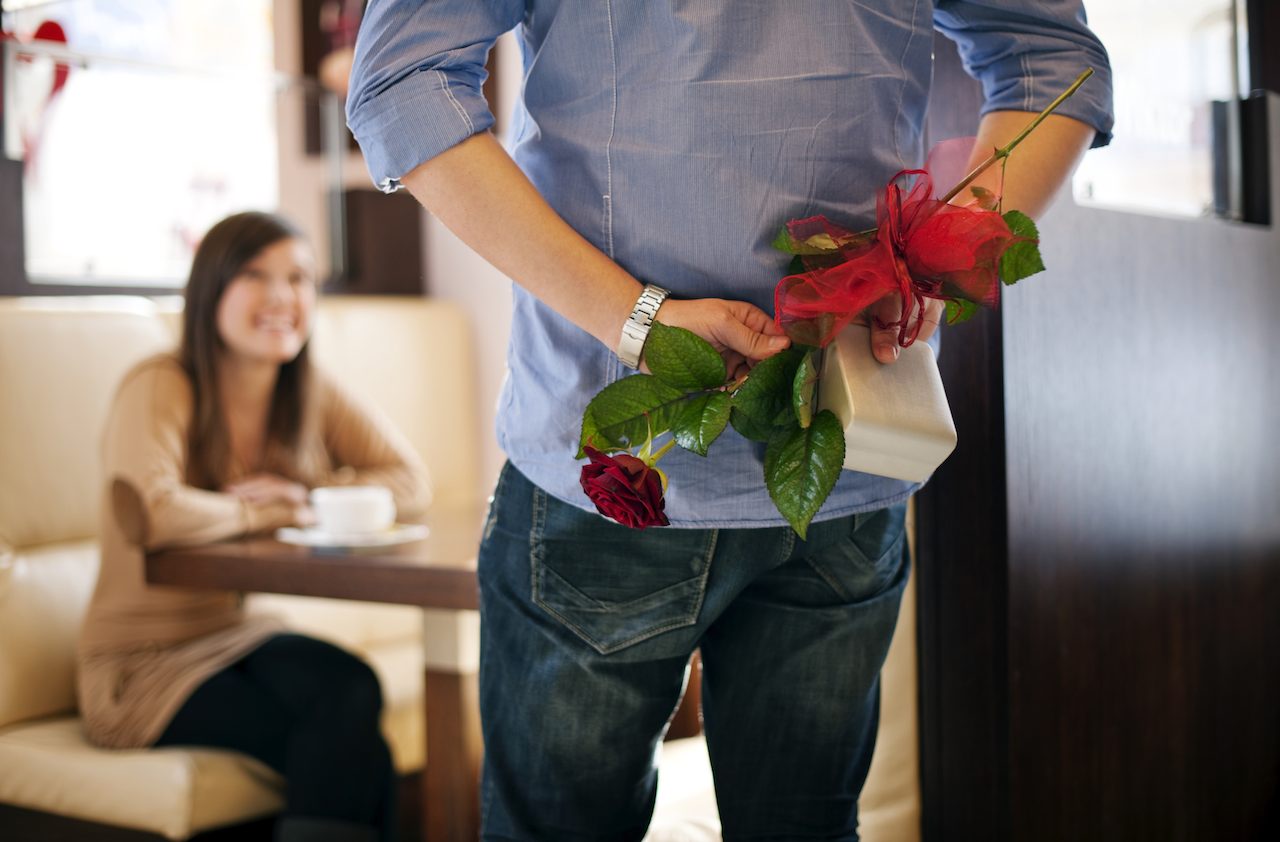6 Things You Must Know About Valentine's Day Gifts
Here's how to pick the right present for your sweetheart.

1. Gender matters.
Gift givers planned to spend an average of $134 on Valentine’s Day last year, with men saying that they would spend nearly twice as much as women. Greeting cards and candy were the most popular gifts, and roughly one-third of lovebirds (skewing heavily male) said they would buy flowers.
2. Especially in Alaska.
According to the 2013 U.S. Census, the state most heavily populated by men is Alaska, with North Dakota not far behind. In such places, men may be more motivated to spend money on wooing. Research from the University of Minnesota’s Carlson School of Management found that where there is a perceived scarcity of women, men generally tend to spend more and save less than do men in areas where women are more numerous. Similarly, when women think men outnumber them, they expect men to spend more on Valentine’s Day gifts (and dinner dates and engagement rings).
3. Roses may be more reasonable.
The wholesale price for roses (which florists pay) can double on Valentine’s Day—and what you pay more than covers that markup. But because Valentine’s Day falls on a Saturday this year, prices may be slightly lower than if the holiday had landed on a weekday. “There’s about 20% less demand on the weekend because men have more time to plan,” says Pete McBride, owner of ValentineRoses.com and Towers Flowers, a florist shop in North Babylon, N.Y. You may also do well at certain supermarkets or big-box stores, such as Wegmans and Costco, which tend to carry mid- to long-stem beauties (at least 50 centimeters long) and charge less than what florists bill for a professional arrangement.
From just $107.88 $24.99 for Kiplinger Personal Finance
Become a smarter, better informed investor. Subscribe from just $107.88 $24.99, plus get up to 4 Special Issues

Sign up for Kiplinger’s Free Newsletters
Profit and prosper with the best of expert advice on investing, taxes, retirement, personal finance and more - straight to your e-mail.
Profit and prosper with the best of expert advice - straight to your e-mail.
4. But you’ll pay up for chocolate.
A sharp rise in the cost of cocoa in 2014 because of rising global demand and fears of tight supplies led several major manufacturers to increase their prices during the summer. Hershey’s, for example, started charging 8% more for its candy in July. Mars, whose brands include Dove and M&M’s, hiked prices 7% the same month.
5. Together time is more precious than money.
Don’t sweat it if you’re reluctant to spend a bundle on a box of chocolates or a dozen roses. Studies show that activities that bring you closer to loved ones make you happier than buying expensive items. You and your significant other may get more joy from doing something you both love to do—say, catching a movie or making dinner together.
6. Make it a money date.
Still need inspiration for what to do with your significant other? Talk about money. If that doesn’t sound romantic, think again. A 2014 survey of married couples by the consumer services division of the credit bureau Experian found that 73% of women and 60% of men say they found their spouse more attractive when he or she was willing to talk about personal finances and credit. Brittney Castro, a financial planner in Los Angeles, suggests couples schedule regular “money dates,” during which spouses set and review their progress toward financial goals and air any money concerns. “By scheduling a date, each person can come to the conversation prepared,” she says. “You’re not ambushing each other at the end of a stressful workday.” Schedule the first money date for Valentine’s Day and you can discuss just how expensive flowers and chocolates are now.
Profit and prosper with the best of Kiplinger's advice on investing, taxes, retirement, personal finance and much more. Delivered daily. Enter your email in the box and click Sign Me Up.
-
 8 Ways to Declutter Your Life: Retirement 'Non-Resolutions'
8 Ways to Declutter Your Life: Retirement 'Non-Resolutions'Here's how to stop wasting your energy on things that don't enhance your new chapter and focus on the things that do.
-
 To Retire Rich, Stop Chasing Huge Returns and Do This Instead
To Retire Rich, Stop Chasing Huge Returns and Do This InsteadSaving a large percentage of your income, minimizing taxes and keeping spending in check can offer a more realistic path to retiring rich.
-
 New Year, New Retirement Rules: How to Keep Up With Changes
New Year, New Retirement Rules: How to Keep Up With ChangesFor a successful modern retirement, prepare for a longer life, manage high health care costs and prioritize your social life and purpose.
-
 9 Types of Insurance You Probably Don't Need
9 Types of Insurance You Probably Don't NeedFinancial Planning If you're paying for these types of insurance, you may be wasting your money. Here's what you need to know.
-
 21 Last-Minute Gifts for Grandparents Day 2025 to Give Right Now
21 Last-Minute Gifts for Grandparents Day 2025 to Give Right NowHoliday Tips Last-minute gifting is never easy. But here are some ideas to celebrate Grandparents Day.
-
 Texas Sales Tax-Free Weekend 2025
Texas Sales Tax-Free Weekend 2025Tax Holiday Here's what you needed to know about the Texas sales tax holiday.
-
 Alabama Tax-Free Weekend 2025
Alabama Tax-Free Weekend 2025Tax Holiday Here’s everything you need to know about the 2025 back-to-school Alabama sales tax holiday.
-
 Amazon Resale: Where Amazon Prime Returns Become Your Online Bargains
Amazon Resale: Where Amazon Prime Returns Become Your Online BargainsFeature Amazon Resale products may have some imperfections, but that often leads to wildly discounted prices.
-
 The Sweet 23: States Where Twix and Kit Kat Avoid the ‘Candy Tax’
The Sweet 23: States Where Twix and Kit Kat Avoid the ‘Candy Tax’State Taxes There’s something spooky this Halloween, and it’s not just the ghouls. Find out if your state’s sales tax takes a bite out of sweet savings.
-
 Florida Back-to-School Tax-Free Holiday 2025
Florida Back-to-School Tax-Free Holiday 2025Sales Taxes The new tax-free holiday in Florida brought month-long savings on computers, clothing and other school supplies.
-
 Roth IRA Contribution Limits for 2026
Roth IRA Contribution Limits for 2026Roth IRAs Roth IRAs allow you to save for retirement with after-tax dollars while you're working, and then withdraw those contributions and earnings tax-free when you retire. Here's a look at 2026 limits and income-based phaseouts.